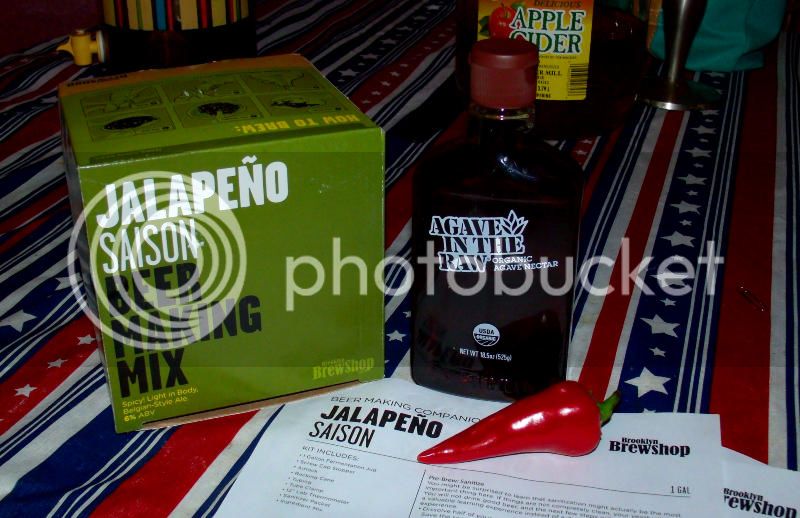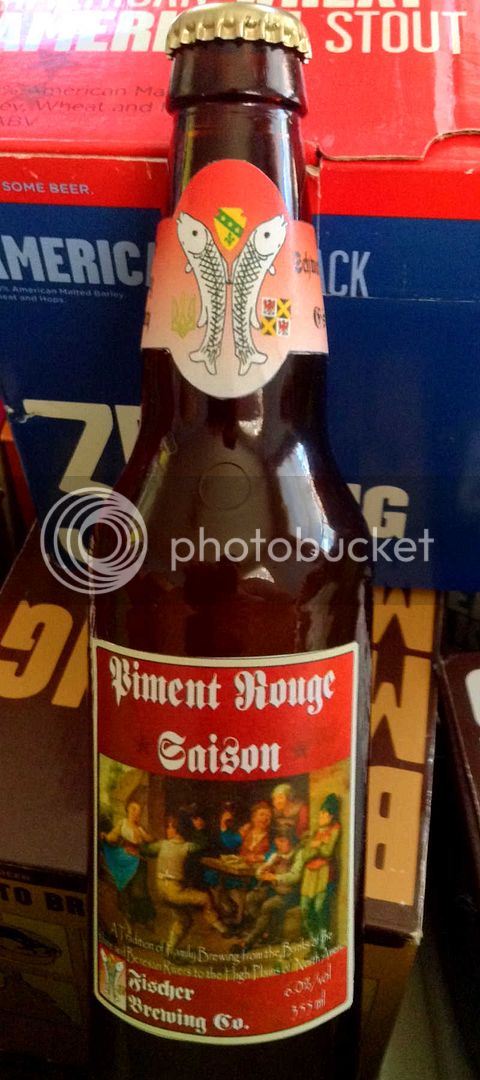TasunkaWitko
Well-Known Member
I am set to brew a 1-gallon batch of Brooklyn Brew Shop's Jalapeño Saison:
http://brooklynbrewshop.com/beer-making-mixes/jalapeno-saison-mix
[ame]https://vimeo.com/47335883[/ame]
http://brooklynbrewshop.com/directions/Brooklyn_Brew_Shop_Jalapeno_Saison_Instructions.pdf
A couple of interesting twists on this beer are that it is brewed with agave syrup and that it incorporates a jalapeño for a spicy aroma and flavour; BBS describes it as the "world's best nacho beer," and I must admit that this tagllne is what convinced me to finally try it.
This will be my sixth BBS brew, and as I gain experience, my brewing procedure gets more efficient and my confidence grows. This brew will be the first time that I deviate from the instructions just a bit. Since the "green" aroma and flavour of jalapeños and green peppers has always been very unappealing to me, I decided to use a fully-ripe red chile. It's not a very radical change, but it will allow me to flex my wings a bit and see where the variation goes.
As with my other "Tips and Advice" threads, I will chronicle my Jalapeño Saison journey here. If anyone has brewed this beer, I'd be interested in hearing about your experiences with it - please post them here!
Thanks in advance -
Ron
http://brooklynbrewshop.com/beer-making-mixes/jalapeno-saison-mix
[ame]https://vimeo.com/47335883[/ame]
http://brooklynbrewshop.com/directions/Brooklyn_Brew_Shop_Jalapeno_Saison_Instructions.pdf
A couple of interesting twists on this beer are that it is brewed with agave syrup and that it incorporates a jalapeño for a spicy aroma and flavour; BBS describes it as the "world's best nacho beer," and I must admit that this tagllne is what convinced me to finally try it.
This will be my sixth BBS brew, and as I gain experience, my brewing procedure gets more efficient and my confidence grows. This brew will be the first time that I deviate from the instructions just a bit. Since the "green" aroma and flavour of jalapeños and green peppers has always been very unappealing to me, I decided to use a fully-ripe red chile. It's not a very radical change, but it will allow me to flex my wings a bit and see where the variation goes.
As with my other "Tips and Advice" threads, I will chronicle my Jalapeño Saison journey here. If anyone has brewed this beer, I'd be interested in hearing about your experiences with it - please post them here!
Thanks in advance -
Ron




















![Craft A Brew - Safale S-04 Dry Yeast - Fermentis - English Ale Dry Yeast - For English and American Ales and Hard Apple Ciders - Ingredients for Home Brewing - Beer Making Supplies - [1 Pack]](https://m.media-amazon.com/images/I/41fVGNh6JfL._SL500_.jpg)







































